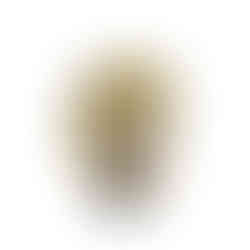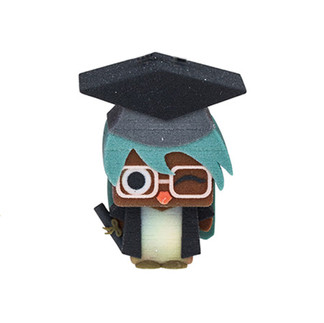What material do we use?
We print with Full Color Sandstone, one of the best material for figurines, architecture, medical models and other applications that require many colors.
What is Full Color Sandstone?
Full Color Sandstone is a type of material made from powder that looks like sandstone. Once you start printing your item in your 3D printer, the powder spreads out in layers according to your design. Each layer of powder is colored with one of the hundreds of thousands of colors available, glued together, and then the printer sweeps back over to build the next layer. Once your item finishes printing and drying, the excess powder is dusted off and dipped in a liquid to make the item stronger.
What are the benefits of Full Color Sandstone?
Let's start with the name: Full Color. That means any color you can imagine (and possibly some colors you haven't imagined yet!) can be printed. First of all, it's cost-effective. Printing with Full Color Sandstone will not break your bank account when printing your items in bulk. Second, by printing in Full Sandstone Color, you can reduce the amount of waste created because any leftover powder can be saved for future products. But, the home run hit with Full Color Sandstone is how many options you have when it comes to customizing your 3D printed items. Another Full Color material we have is called Full Color Glass Fiber Composite, it is also environment-friendly, sustainable and made from recyclable materials that are not only super durable but also pretty colourful.
Why is Full Color Sandstone undoubtedly better for customization?
Frankly, if you aren't printing your 3D models with Full Color Sandstone or Full Color Glass Fiber Composite, you will not be unlocking your 3D printed items full potential. Gone are the days where you only get to print in the standard seven colors of the rainbow. I'm not saying the rainbow is bad, but why not go somewhere over the rainbow and receive over 6,000,000 color choices instead? Sometimes less is more, but not in this case. If you want to print your 3D printed item in 14 different shades of red, you have hundreds of red types to choose from. Sculptures are perfect only if they are made of color sandstone. It is flexible and thus an ideal material choice for 3 D Printed Objects. However if molded objects are toys or any object to play, best suited material is our Full Color Glass Fiber Composite.
How should I handle the material?
Composite Multicolor objects are also somewhat fragile (comparable to a porcelaine), so it is important to handle them with caution. Sandstone is a brittle material that must be handled with care.
How well will the colors of the product match the colors of the file?
The colors of the product will not perfectly match the colors of digital file or render. When printing in this material, some variation in color shade is unavoidable, especially with difficult-to-produce colors such as browns and skin tones. We optimize each print run to make individual models look great, but you may see differences in color when looking at multiple prints of the same model side by side.
Other things I would be aware of?
Sandstone are not approved for direct contact with food and it is not water resistant.
What is the 3D printing process?
We use a ZCorp 3D printer for our composite multicolor prints. The multicolor parts are 3D printed with a process called Colorjet. The process of our Colorjet 3D printing technology goes as follows:
Step 1: 3D Model transferred to the 3D printer
Step 2: The Object is getting 3D printed
Step 3: The Object is removed from the batch
Step 4: Cleaning and gluing
Step 5: Varnishing



















Comments